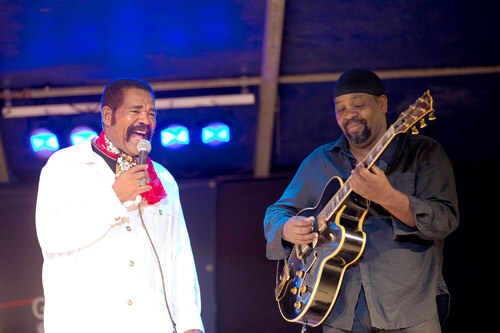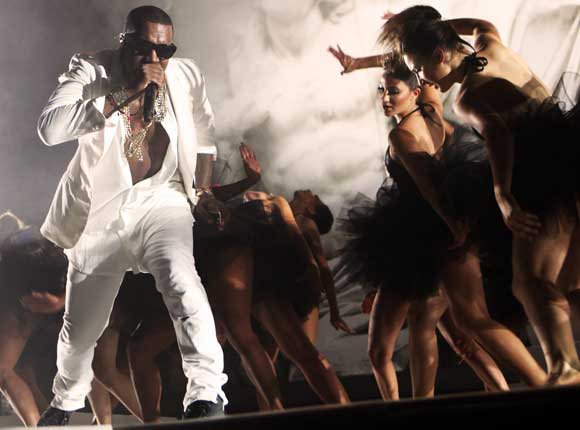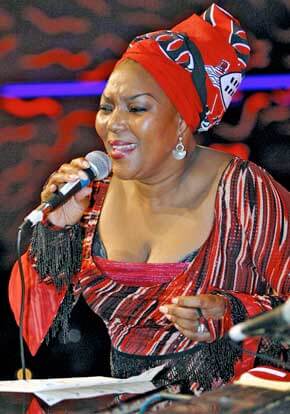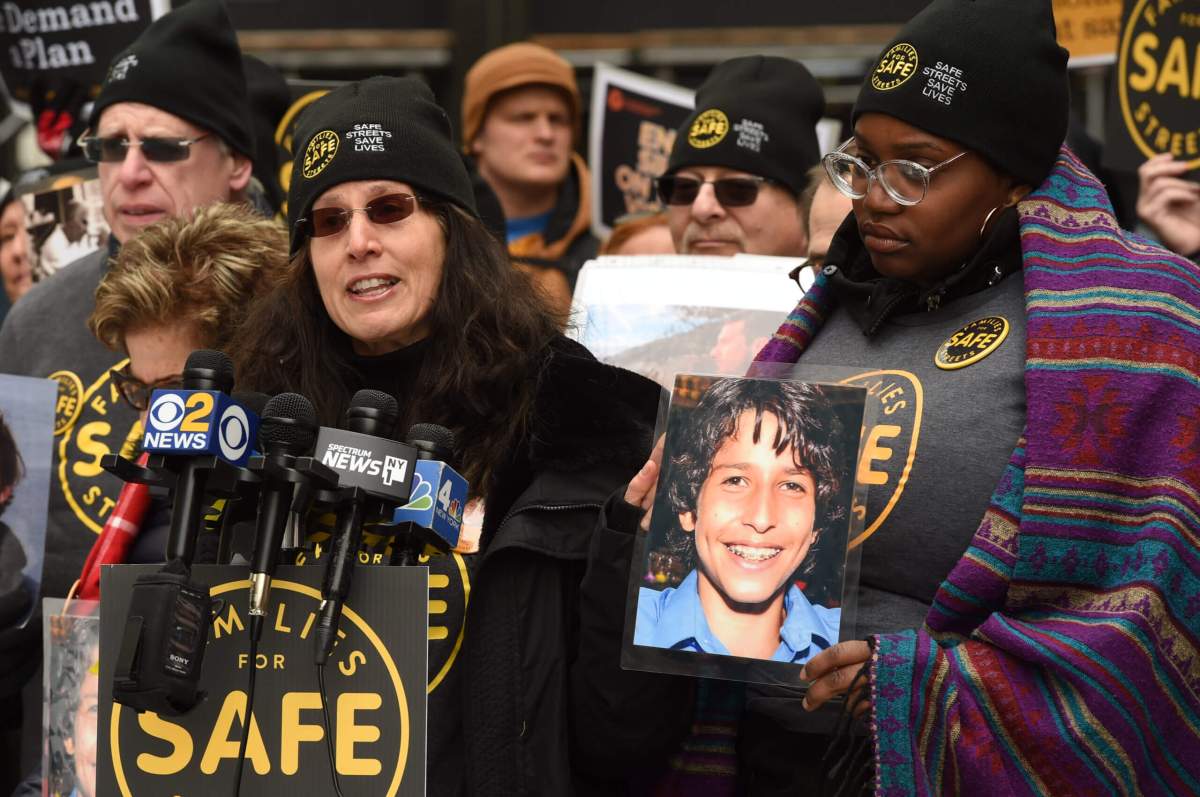A spirited debate marked opening ceremonies of the 27th annual Gwoka Festival, July 9-14 in Sainte Anne, Guadeloupe. In particular, the news that Gwoka (Creole word for large drum), once the expressions of an oppressed people is now under consideration for an UNESCO world heritage designation. Panelists and members of the public weighed in on the direction of the music, some seeing it as an opportunity for economic development others concerned about its role as independent voice.
The festival itself was a triumphant celebration of this unique art form and by extension the struggle of a people. Six nights of music, dance, and discussion, all free, set beneath the stars and steps from the beachfront were the hub of activities in Sainte Anne. Each night hundreds of Guadeloupeans sprinkled with tourists and international fans of the music enjoyed a communal cultural experience.
In the drum can be found the heart of Guadeloupe. The essence of the place is inseparable from its music. From the pattern of speech, a lilting intonation, to the way people move, the wind in the trees, or the sound of the surf, listen and you will hear it in Gwoka’s rhythms.
Historically it has also been the voice of resistance and rebellion from its inception to modern times.
“The polemic is that there is an idealogique dimension to Gwoka. The music has been strongly associated with the nationalistic movement and its popularity today grew out of that movement. In that sense the music and the ideology can not be separated its a complex relationship”. says historian and drummer Marie Helena Laumuno.
Felix Cotellon explains, “For a very long time Gwoka has been marginalized, not considered music. In the 70’s a nationalist struggle against the colonialist power took hold led by the workers and farmers unions. The movement introduced the music to students and intellectuals.” Cotillon, then national director of U.P.L.G. a liberation organization is now president of Repriz, the driving force behind the festival and the UNESCO proposal, “A cultural identity grew out of the struggle and the gwoka music eventually gained mainstream acceptance.” he said. “Now the challenge is to be more inclusive.”
After opening ceremonies throngs of fans spent the rest of the evening gathered around several traditional gwoka bands playing on local streets. One, on the steps of the Centre Culturel featured the traditional lineup Maké, lead drummer, and two boulas playing the rhythmic sequences and chorus playing calabash shakers.

Photo by William Farrington
The following night hundreds of spectators arranged in a semicircle around a gwoka ensemble. The event, a Lewoz, is the traditional way to hear the music. The leader Bébé Rospart called out an introductory phrase a cappella and was answered by the chorus, which signaled the drummers what rhythm would be played. Once the music was rolling, dancers were invited into the circle where they first made eye contact with the drummers and then challenged them to stay in tune with their movements. The ritual was repeated over again when a new dancer entered and carried on till the early morning hours.
The following nights many of the great artists of the music performerd from a stage beneath the stars and steps from the beach. Traditional ensembles Esnard Boisdur, Kan’nida, and Konvwaka. Gwoka Moderne from Fondong and Rozan Monza. Karnival band Voukoum, vocal groups Fanm Ki Ka and Kalbas Ka, and dancers and musicians of traditional arts schools (Acadamiduka, Klethnica, Sakitaw,) dance troups Djok, and Cie Koklaya among many others.
Boisdur and Kan’nida both are from the rugged Grand-Fonds region, both also continue family traditions in the music.
Boisdur’s voice had a timeless beauty, mesmerizing as he sung complex melodic patterns that rose and fell over the gwoka rhythms, answered by a chorus that echoed the rhythm. The drumming itself is understated in comparison to other gwoka bands recalling, perhaps, the style of previous generations. He learned in family gatherings and has played the music all his life recording 17 albums since 1983. Three songs he played, ‘A Bwa Vigne’, Pwotéjé Yo and Las Fe Mal came from his latest album ‘Yebois’. All, he told Caribbean Life, are inspired by social issues he observes in life around him.
Kan’ nida, is a family group led by two brothers Zagalo and Rene Geoffroy. Their powerful set included two bouladjel, ‘Tankitan’ and ‘BonJou’. Bouladjel is a rhythmic vocal and throat singing technique the group has mastered. Gino Sitson, a genre busting vocalist who has worked with the Geoffroy family, explains that Gwoka originally was the music of African slaves, in particular the maroons. “Gwoka was developed in the Grands Fonds because maroons gathered there, later in colonial times drumming was banned bouladjel was developed using the voice as drum.” The style of singing was kept alive at funerals on Grand-Terre where singing without without instrumentation lasts through the night.
The Kan’nida set also included a totally improvised song “Chikoungounya” sung by Zagalo in a wryly humorous poke at his brother Rene who is suffering with a case of the mosquito borne disease.
Glawdys N’Dee a native of Sainte Anne and founder of Gwadloup International Day in Chicago describes what a visitor can expect “What i see in the festival itself is the essence of life and culture; authentic music, ambiance and valuation of the culture.” News on the UNESCO designation is expected in the coming months.

Photo by William Farrington


























